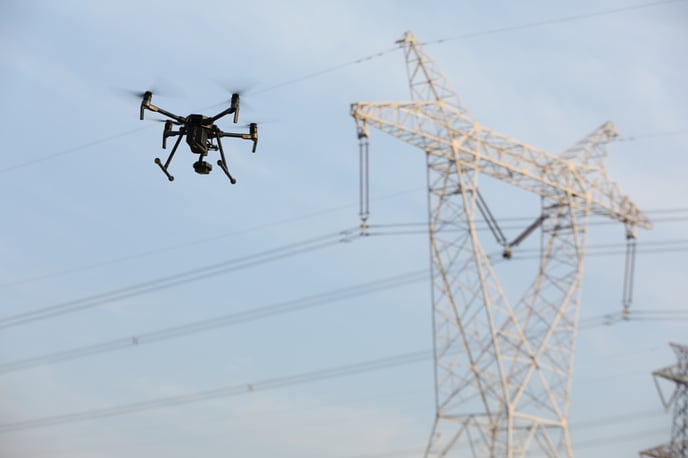How Drone-Based LiDAR Can Be Used in Power Line Inspections
Power line inspections are essential for maintaining the reliability and safety of power lines. However, traditional inspection methods pose safety risks for technicians and can be time-consuming and labor-intensive.
 Fortunately, drone-based LiDAR technology offers a safer and more efficient alternative for power line inspections.
Fortunately, drone-based LiDAR technology offers a safer and more efficient alternative for power line inspections.
How it works
Drones equipped with LiDAR sensors can fly along power lines and capture highly detailed 3D images and data. This data can be analyzed to identify potential issues or areas of concern, such as damaged or worn lines, broken insulators, or leaning poles. LiDAR technology uses laser beams to measure the distance between the sensor and the object, providing highly detailed and accurate data.
Benefits
One of the key advantages of using drone-based LiDAR for power line inspections is its high level of accuracy and precision. This allows for a more comprehensive analysis of power lines and a greater chance of identifying potential issues. Additionally, drone-based LiDAR inspections are more efficient as the drones can cover large areas quickly, and the data can be analyzed in real-time. This means that potential issues can be identified and addressed more quickly, reducing the risk of power outages or other problems.
Hard-to-reach areas
In power line inspections, traditional methods typically involve technicians physically climbing poles and towers to inspect the lines for damage or wear. This method can be dangerous, time-consuming, and labor-intensive, especially when it comes to inspecting hard-to-reach areas such as remote or rugged terrain, tall towers and poles, or areas with challenging weather conditions.
Drone-based LiDAR technology offers a safer and more efficient alternative for power line inspections. Drones equipped with LiDAR sensors can fly along power lines and capture highly detailed 3D images and data, even in difficult-to-reach areas. The data can then be analyzed to identify potential issues or areas of concern, such as damaged or worn lines, broken insulators, or leaning poles.
One of the key advantages of using drone-based LiDAR in power line inspections is its ability to access hard-to-reach areas safely and efficiently. Drones can fly to heights and in areas that would be difficult or impossible for technicians to access, capturing high-resolution images and data without putting anyone at risk. Additionally, drones can cover large areas quickly, and the data can be analyzed in real-time, reducing the risk of power outages or other problems.
Visit rockrobotic.com to learn more about ROCK Robotic's survey-grade LiDAR hardware and software.
![ROCK-robotic-community-logo.png]](https://learn.rockrobotic.com/hs-fs/hubfs/ROCK-robotic-community-logo.png?width=250&height=50&name=ROCK-robotic-community-logo.png)